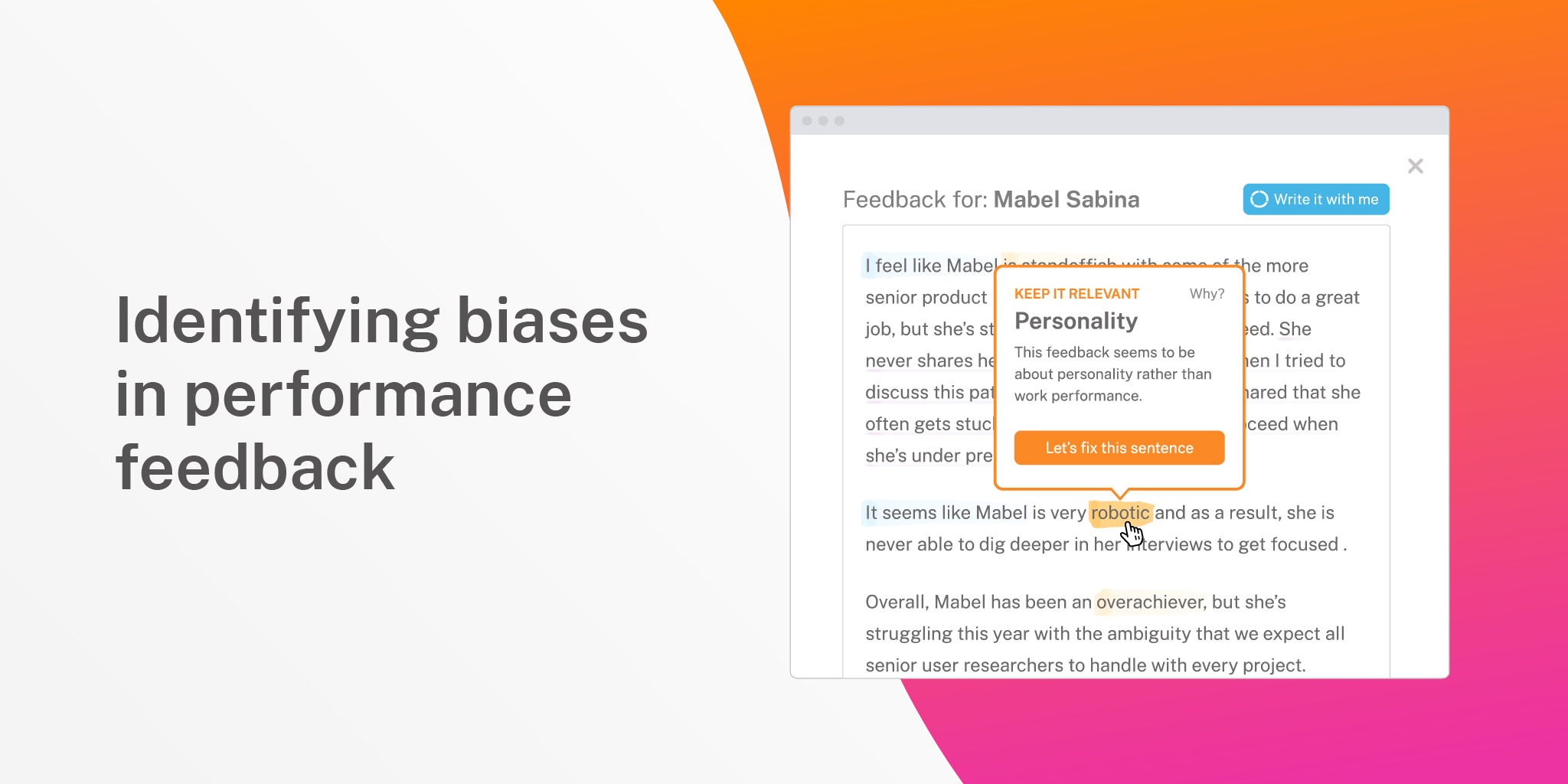Identify these 5 biases in performance feedback and learn to remove them to create better feedback for your team.

To effectively mitigate the risk of biased feedback, organizations must grasp the importance of identifying and tackling biases in performance evaluations.
First, take a moment to think about your own biases and consider taking courses or tests like the Implicit Association Test to uncover any hidden ones. Then, set up systems, procedures, and technologies to help identify common biases in performance feedback.
Start writing actionable feedback with Textio today
Here are some common biases that might come up in performance reviews:
It's important to address biases when evaluating performance. This helps to be fair and provide feedback effectively throughout your organization. By acknowledging biases and using the right tools, companies can create systems that identify and address biases effectively. These efforts make the environment more inclusive and fair for everyone involved, which is helpful for their growth and success.
Learn more about our free trial of Textio Lift here to help you identify common biases like these.
We’ve got reports, videos, guides, and courses on AI, HR, burnout, and more.
They’re all in the Resource Center.